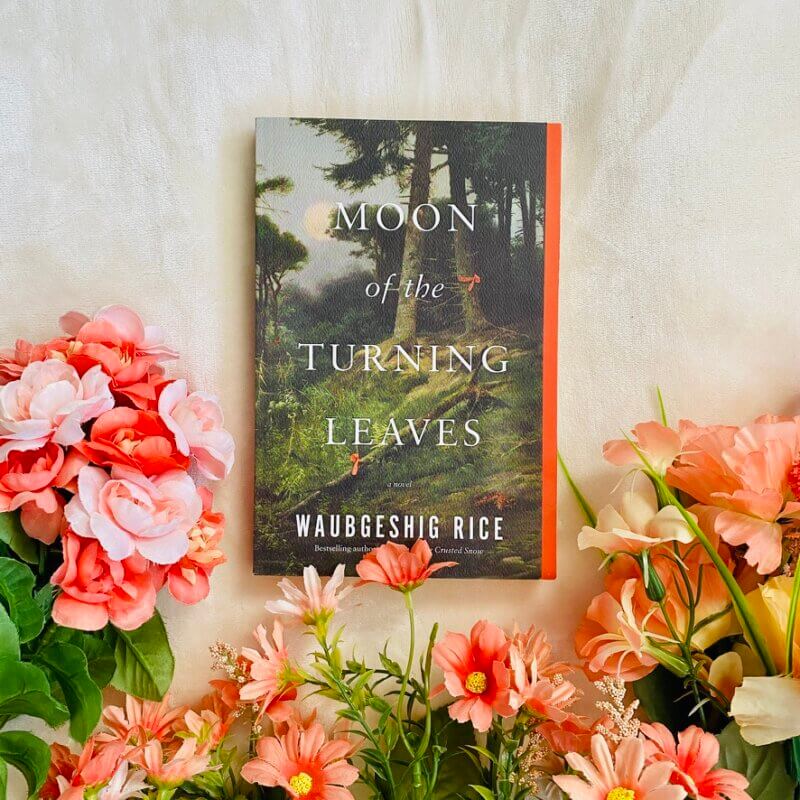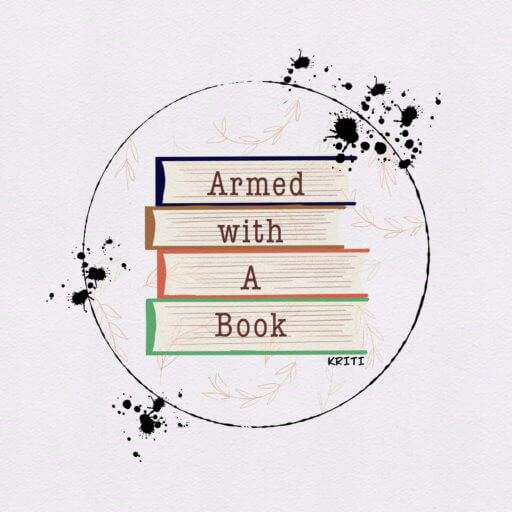Welcome friend! Moon of the Crusted Snow is one of my favorite book discussions of all time. At the time when I was reading it, we were still not completely out of the pandemic scare though things had opened up and visiting friends and family was allowed. That story was about people on a reserve and their perseverance in the face of calamity. When the modern world that they had come to rely on was no longer accessible, they had to come together as a community and relearn old ways to survive. Moon of the Crusted Snow had immersive atmospheric writing, a page-turning magnetism, a refreshing unique plot and really well done characters that I came to love in a short time. Moon of the Turning Leaves was a follow up I did not expect.

Waubgeshig Rice | Goodreads | Moon #2
Twelve years after the lights go out . . .
An epic journey to a forgotten homeland
The hotly anticipated sequel to the bestselling novel Moon of the Crusted Snow
It’s been over a decade since a mysterious cataclysm caused a permanent blackout that toppled infrastructure and thrust the world into anarchy. Evan Whitesky led his community in remote northern Ontario off the rez and into the bush, where they’ve been living off the land, rekindling their Anishinaabe traditions in total isolation from the outside world. As new generations are born, and others come of age in the world after everything, Evan’s people are in some ways stronger than ever. But resources in and around their new settlement are beginning to dry up, and the elders warn that they cannot afford to stay indefinitely.
Evan and his fifteen-year-old daughter, Nangohns, are elected to lead a small scouting party on a months-long trip to their traditional home on the north shore of Lake Huron–to seek new beginnings, and discover what kind of life–and what dangers–still exist in the lands to the south.
Moon of the Turning Leaves is Waubgeshig Rice’s exhilarating return to the world first explored in the phenomenal breakout bestseller Moon of the Crusted Snow a brooding story of survival, resilience, Indigenous identity, and rebirth.
Moon of the Turning Leaves – Review
Taking place over ten years since the events of Moon of the Crusted Snow, this book was like coming home in some ways. It is a new home though. Evan Whitesky, the protagonist in the first book, has successfully moved his family to a remote part of the land, further away from the reserve they used to call home. His friends and some other families from the reserve have joined him and settled there too. Over the decade, there have been losses from illness as well as old age. News from the cities has been rare and some people have ventured out to discover how that world is but no one has returned.
I love that the book begins with the birth of Evan’s granddaughter. It shows how life has not stopped. That people still live, love and continue to keep their culture alive. The Anishinaabe practices are beautifully interwoven throughout the story.
The dilemma in Moon of the Turning Leaves is that the land of the new settlement is starting to show signs that it will not be able to sustain them forever. The old and the young see the dwindling supply of fauna and fish, and the size and timing of harvest. They know that they would have to leave and find a new home sooner than later. There are discussions with elders and community members. The sadness of the inevitable upcoming change. The fear of how to go about finding a new home. The book portrays this heart wrenching reality.
Evan’s teenage daughter, Nangohns, is an excellent perspective to this story. I enjoyed learning about her childhood and upbringing. She is one of the best hunters in the community, sharp with her bow. She is an advocate for going into the world. She was too young when they moved to this part of the land but as a hunter and keen observer of the land, she knows they cannot survive there. It’s more the young people and the legacy that would be left to them rather than the elders.
Finally, Evan sets out with Nangohns and some trusted friends and community leaders to see if their ancestral home – the one from before the reserve, on the shorts of Lake Huron – is still an option, a place that their community can return to. Going on this expedition is a learning experience for Nangohns in particular. Her parents don’t talk about the events at the reserve after the collapse of society and the first leg of their journey is to stop at the reserve. She sees a vulnerable side of her father that she hadn’t before.
Waubgeshig Rice masterfully describes the burden of the past, the eeriness of the world left behind, be it the reserve or the city or the highways, and the effect it has on the various members of the scouting party. In many ways, they are following in the footsteps of two of their friends who left a long time ago and it is wonderful to read about the joy of finding clues that they were there. It is also good to see who else has survived and how indigenous traditions continue in other parts of the country.
But travel also brings challenges. Injury, encounters with dangerous people, suspicion at strangers who want to be friends, are all situations that the group encounters. Being away from home for an extended period of time is hard too. There is no knowing if they would all make it back and when that would be even though they have done the calculations and hope for the best.
Moon of the Turning Leaves is as sombre a book as Moon of the Crusted Snow was. Though the indigenous perspective in a post-apocalyptic setting continued to be new and the characters and plot were engaging, the second book didn’t stand out to be like the first one did. I remember spending hours discussing the first book. I looked up sources and guided discussion questions. I did not feel inclined to do that with this book and that is okay too. I enjoyed my time with it. What is fascinating to me though are the stats on Goodreads related to this series:
Moon of the Crusted Snow (October 2018) – 31,607 ratings; Average rating 3.85
Moon of the Turning Leaves (October 2023) – 6,227 ratings; Average rating 4.26
(numbers from Nov 7, 2024)
Assuming the same people who loved the first book, returned to the second, that is only about 20% of the readership. The fact that they liked it more than the first book (by about 0.5 star) is also interesting since I personally preferred the first one and when I asked Ariel, she said the same.
What brings us back to a world, especially one that is post-apocalyptic in nature? What makes a sequel more highly rated than the first book? These are all questions I think about.
Find Moon of the Turning Leaves on Goodreads. Also check out Moon of the Crusted Snow on Goodreads and my book discussion with Laur.

Be First to Comment